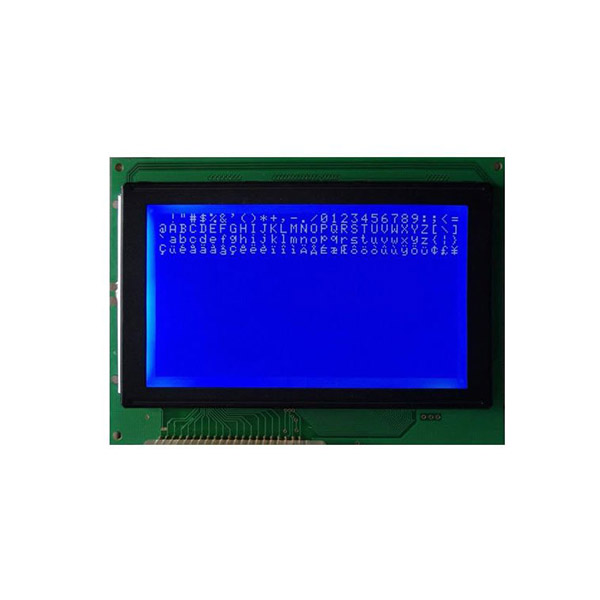Why Choose an STN1 LCD Screen for Embedded Systems?
4 min readIn the dynamic world of embedded systems, display performance, power consumption, and long-term reliability are critical success factors. Whether it's an industrial control panel, a handheld diagnostic tool, or a smart meter, the display technology chosen can significantly impact the overall user experience and system efficiency.
Among various display technologies available today, STN1 LCD screen technology stands out as a practical and reliable solution for a wide range of embedded applications. This article explores why STN1 LCD screens are an ideal choice and how Shenzhen Yicheng Optoelectronic Technology Co., Ltd, an innovative enterprise specializing in the production of LCD displays for industrial control systems, is advancing the capabilities of STN1 displays for modern embedded platforms.
Understanding STN1 LCD Screen Technology
STN stands for Super Twisted Nematic, a type of passive matrix LCD technology that offers enhanced contrast and viewing angles compared to standard twisted nematic (TN) displays. The “STN1” variant represents a refined version tailored for industrial and embedded applications, emphasizing performance, durability, and low power usage.
STN1 LCD screen technology is particularly suitable for:
Monochrome or dual-color displays
Text-heavy interfaces
Devices operating in harsh environments
Battery-powered or low-power systems
The cost-efficiency, long operational life, and excellent visibility under sunlight make STN1 screens a popular choice for many embedded designers.
1. Ideal for Industrial Use: Robust & Reliable
In industrial environments, displays are often exposed to extreme conditions—temperature fluctuations, vibrations, humidity, and long operating hours. STN1 LCD screens are known for their mechanical durability and temperature resilience, making them ideal components in industrial LCD display modules.
At Shenzhen Yicheng Optoelectronic Technology Co., Ltd, STN1 screens are designed with ruggedness in mind. The company uses high-quality polarizers and sealing technologies to ensure long-term stability, even in factory automation, energy systems, and medical instruments.
Key Industrial Advantages:
Operating temperature range from -20°C to 70°C (or wider)
Anti-glare or transflective coatings
Long product lifecycle support

2. Low Power Consumption for Embedded Systems
One of the standout advantages of STN1 LCD screen technology is its ultra-low power consumption, especially compared to TFT or OLED displays. Since STN screens use passive matrix addressing, they do not require constant refreshing, thereby saving energy—an essential feature for battery-powered and low power LCD for embedded systems.
Yicheng’s STN1 LCD modules are widely used in:
Portable measurement devices
Smart thermostats
Embedded controllers and HMIs
IoT terminal devices
For OEMs looking to maximize uptime while minimizing energy drain, STN1 screens offer an ideal balance between performance and efficiency.
3. Optimized for Text and Data Presentation
STN1 displays are particularly effective for rendering sharp, high-contrast alphanumeric characters, which makes them perfect for devices that rely heavily on data readouts or text menus.
Yicheng provides customizable STN1 LCD display modules with different resolutions, fonts, and character layouts to match specific application needs. Whether it’s a 16×2 character module or a graphic display (e.g., 128×64 pixels), these modules deliver clarity and responsiveness in even the simplest MCU-based systems.

4. Cost-Effective and Easily Integrated
Unlike more complex display technologies that require extensive driver ICs and software stacks, STN1 LCD modules are relatively easy to integrate, even into low-resource microcontroller environments. This simplifies development, shortens the time to market, and reduces overall system cost.
Yicheng Optoelectronic’s STN1 displays come with:
Built-in controllers for SPI, I2C, or parallel communication
Standardized pinouts for drop-in replacements
Long-term supply chain reliability and technical support
This makes them an excellent fit for legacy systems as well as modern embedded platforms.
5. Customization & Engineering Support from Yicheng
One of the key strengths of Shenzhen Yicheng Optoelectronic Technology Co., Ltd lies in its ability to provide tailored display solutions. Whether you need a custom-shaped STN1 LCD panel, special backlight color, or rugged enclosure integration, Yicheng’s engineering team offers end-to-end support from concept through mass production.
The company’s factory is equipped for:
Custom IC bonding
FPC layout design
Optical enhancement (e.g., wide viewing angle films)
Touch panel integration
By collaborating closely with embedded device manufacturers, Yicheng ensures each industrial LCD display module meets both functional and aesthetic needs.

Conclusion: STN1 – A Smart Display Choice for Embedded Innovation
As embedded systems continue to evolve, the demand for durable, energy-efficient, and easy-to-integrate displays continues to grow. STN1 LCD screen technology offers a compelling combination of low power consumption, reliability, and display clarity, making it a top choice for industrial, medical, and IoT applications.
With its expertise in custom display modules and industrial-grade LCD solutions, Shenzhen Yicheng Optoelectronic Technology Co., Ltd remains at the forefront of providing optimized visual interfaces for embedded system designers worldwide.
If you're looking for a low power LCD for embedded systems or need a reliable partner for industrial LCD display module development, Yicheng’s STN1 solutions offer a proven path to performance and efficiency.
Top 5 Applications of STN LCD Screens in Embedded Systems
www.esenlcdscreen.com
Shenzhen Yicheng Optoelectronic Technology Co., Ltd